For the 2025 school year, there is 1 public preschool serving 206 students in Loup City School District. This district's average pre testing ranking is 2/10, which is in the bottom 50% of public pre schools in Nebraska.
Public Preschool in Loup City School District have an average math proficiency score of 37% (versus the Nebraska public pre school average of 49%), and reading proficiency score of 42% (versus the 50% statewide average).
Minority enrollment is 17% of the student body (majority Hispanic), which is less than the Nebraska public preschool average of 38% (majority Hispanic).
Overview
This School District
This State (NE)
# Schools
2 Schools
608 Schools
# Students
340 Students
159,116 Students
# Teachers
31 Teachers
11,545 Teachers
Student : Teacher Ratio
11:1
11:1
District Rank
Loup City School District, which is ranked within the bottom 50% of all 245 school districts in Nebraska (based off of combined math and reading proficiency testing data) for the 2021-2022 school year.
The school district's graduation rate of 80% has stayed relatively flat over five school years.
Overall District Rank
#194 out of 246 school districts
(Bottom 50%)
(Bottom 50%)
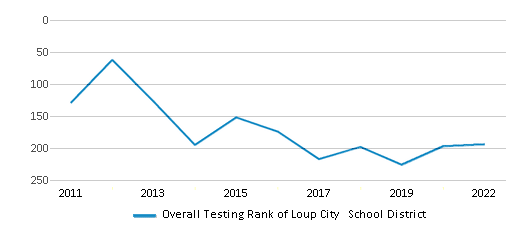
Math Test Scores (% Proficient)
35-39%
46%
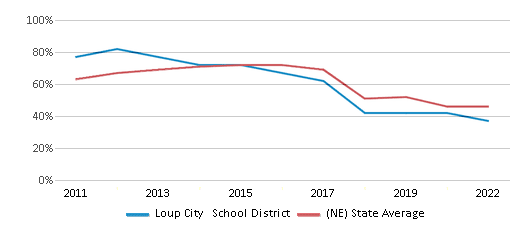
Reading/Language Arts Test Scores (% Proficient)
40-44%
47%
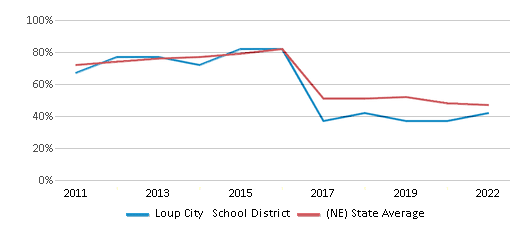
Science Test Scores (% Proficient)
60-64%
62%

Graduation Rate
≥80%
87%

Students by Ethnicity:
Diversity Score
0.26
0.57
# American Indian Students
4 Students
2,298 Students
% American Indian Students
1%
2%
# Asian Students
2 Students
5,185 Students
% Asian Students
1%
3%
# Hispanic Students
33 Students
35,045 Students
% Hispanic Students
10%
22%
# Black Students
3 Students
10,103 Students
% Black Students
1%
6%
# White Students
290 Students
98,250 Students
% White Students
85%
62%
# Hawaiian Students
n/a
272 Students
% Hawaiian Students
n/a
n/a
# Two or more races Students
8 Students
7,963 Students
% of Two or more races Students
2%
5%
Students by Grade:
# Students in PK Grade:
58
19,494
# Students in K Grade:
18
22,311
# Students in 1st Grade:
27
22,796
# Students in 2nd Grade:
14
23,182
# Students in 3rd Grade:
21
22,034
# Students in 4th Grade:
24
22,069
# Students in 5th Grade:
27
20,129
# Students in 6th Grade:
17
6,667
# Students in 7th Grade:
29
221
# Students in 8th Grade:
18
212
# Students in 9th Grade:
24
-
# Students in 10th Grade:
19
1
# Students in 11th Grade:
15
-
# Students in 12th Grade:
29
-
# Ungraded Students:
-
-
District Revenue and Spending
The revenue/student of $17,824 is higher than the state median of $15,464. The school district revenue/student has stayed relatively flat over four school years.
The school district's spending/student of $16,741 is less than the state median of $16,776. The school district spending/student has stayed relatively flat over four school years.
Total Revenue
$6 MM
$5,080 MM

Spending
$6 MM
$5,511 MM
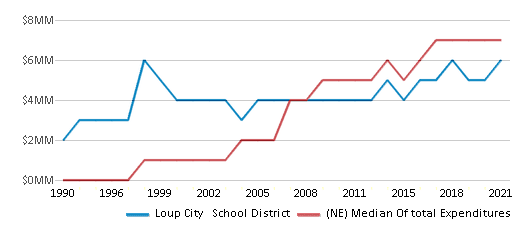
Revenue / Student
$17,824
$15,464
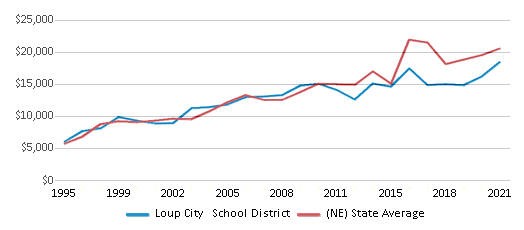
Spending / Student
$16,741
$16,776
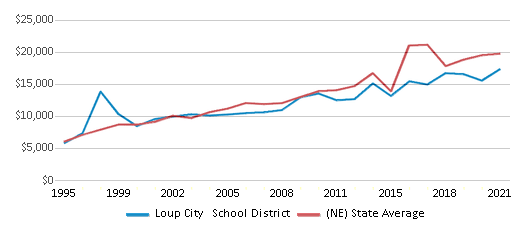
Best Loup City School District Public Preschools (2025)
School
(Math and Reading Proficiency)
(Math and Reading Proficiency)
Location
Grades
Students
Rank: #11.
Loup City Elementary School
(Math: 35-39% | Reading: 40-44%)
Rank:
Rank:
4/
Bottom 50%10
630 N 7th St
Loup City, NE 68853
(308) 745-1814
Loup City, NE 68853
(308) 745-1814
Grades: PK-6
| 206 students
Recent Articles

The Impact of Coronavirus on 九游体育s
This article discusses the widespread impact of COVID-19 on public schools, addressing issues such as school closures, remote learning challenges, effects on standardized testing, and concerns about student progress. It also provides tips for parents suddenly faced with homeschooling responsibilities.

What 九游体育 Students Should Expect After COVID-19
In this article, we鈥檒l take a closer look at the financial impact of COVID-19 on public schools and what to expect in the future. We鈥檒l talk about the effects of budget cuts and other challenges affecting the public school system for the remainder of this school year and into the next.

February 05, 2025
Understanding the U.S. Department of Education: Structure, Impact, and EvolutionWe explore how the Department of Education shapes American education, from its cabinet-level leadership to its impact on millions of students, written for general audiences seeking clarity on this vital institution.





